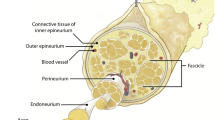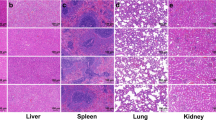Abstract
Peripheral nerve injuries present challenges to regeneration. Currently, the gold standard for nerve repair is an autograft that results in another region of the body suffering nerve damage. Previously, bioactive borate glass (BBG) has been studied in clinical trials to treat patients with non-healing wounds, and we have reported that BBG is conducive for soft tissue repair. BBG provides structural support, degrades in a non-cytotoxic manner, and can be chemically doped. Here, we tested a wide range of chemical compounds that are reported to have neuroprotective characteristics to promote regeneration of peripheral neurons after traumatic injury. We hypothesized that chemical dopants added in trace amounts to BBG would improve neuronal survival and neurite outgrowth from dorsal root ganglion (DRG) explants. We measured neurite outgrowth from whole DRG explants, and survival rates of dissociated neurons and support cells that comprise the DRG. Results show that chemically doped BBGs have differentially variable effects on neuronal survival and outgrowth, with iron, gallium, and zinc improving outgrowth of neurons, and iodine causing the most detriment to neurons. Because chemically doped BBGs support increased nerve regrowth and survival, they show promise for use in peripheral nerve regeneration.




Similar content being viewed by others
References
Archibald, S. J., J. Shefner, C. Krarup, and R. D. Madison. Monkey median nerve repaired by nerve graft or collagen nerve guide tube. J. Neurosci. 15(5 Pt 2):4109–4123, 1995.
Bellantone, M., H. D. Williams, and L. L. Hench. Broad-spectrum bactericidal activity of ag(2)o-doped bioactive glass. Antimicrob. Agents Chemother. 46(6):1940–1945, 2002.
Bellucci, D., A. Sola, and V. Cannillo. Bioactive glass/zro2 composites for orthopaedic applications. Biomed. Mater. 9(1):015005, 2014.
Blaker, J. J., S. N. Nazhat, and A. R. Boccaccini. Development and characterisation of silver-doped bioactive glasscoated sutures for tissue engineering and wound healing applications. Biomaterials 25(7–8):1319–1329, 2004.
Bunting, S., L. Di Silvio, S. Deb, and S. Hall. Bioresorbable glass fibres facilitate peripheral nerve regeneration. J. Hand. Surg. 30(3):242–247, 2005.
Chiono, V., and C. Tonda-Turo. Trends in the design of nerve guidance channels in peripheral nerve tissue engineering. Prog. Neurobiol. 131:87–104, 2015.
Chitambar, C. R. Gallium and its competing roles with iron in biological systems. Biochim. Biophys. Acta 1863(8):2044–2053, 2016.
Deliormanli, A. M. Synthesis and characterization of cerium- and gallium-containing borate bioactive glass scaffolds for bone tissue engineering. J. Mater. Sci. Mater. Med. 26(2):67, 2015.
Dowding, J. M., W. Song, K. Bossy, A. Karakoti, A. Kumar, A. Kim, B. Bossy, S. Seal, M. H. Ellisman, G. Perkins, W. T. Self, and E. Bossy-Wetzel. Cerium oxide nanoparticles protect against abeta-induced mitochondrial fragmentation and neuronal cell death. Cell Death Differ. 21(10):1622–1632, 2014.
Erol, M. M., V. Mourino, P. Newby, X. Chatzistavrou, J. A. Roether, L. Hupa, and A. R. Boccaccini. Copper-releasing, boron-containing bioactive glass-based scaffolds coated with alginate for bone tissue engineering. Acta Biomater. 8(2):792–801, 2012.
Estevez, A. Y., S. Pritchard, K. Harper, J. W. Aston, A. Lynch, J. J. Lucky, J. S. Ludington, P. Chatani, W. P. Mosenthal, J. C. Leiter, S. Andreescu, and J. S. Erlichman. Neuroprotective mechanisms of cerium oxide nanoparticles in a mouse hippocampal brain slice model of ischemia. Free Radic. Biol. Med. 51(6):1155–1163, 2011.
Franchini, M., G. Lusvardi, G. Malavasi, and L. Menabue. Gallium-containing phospho-silicate glasses: synthesis and in vitro bioactivity. Mater Sci. Eng. C Mater. Biol. Appl. 32(6):1401–1406, 2012.
Fu, Q., M. N. Rahaman, B. S. Bal, K. Kuroki, and R. F. Brown. In vivo evaluation of 13-93 bioactive glass scaffolds with trabecular and oriented microstructures in a subcutaneous rat implantation model. J. Biomed. Mater. Res. A 95(1):235–244, 2010.
Hench, L. L., and J. R. Jones. Bioactive glasses: frontiers and challenges. Front. Bioeng. Biotechnol. 3:194, 2015.
Huang, W. H., M. N. Rahaman, D. E. Day, and Y. D. Li. Mechanisms for converting bioactive silicate, borate, and borosilicate glasses to hydroxyapatite in dilute phosphate solution. Phys. Chem. Glasses B 47(6):647–658, 2006.
Jung, S. B. Bioactive borate glasses. In: Bio-Glasses: An introduction, edited by J. R. Jones, and A. G. Clare. Chichester: Wiley, 2012.
Lin, Y., R. F. Brown, S. B. Jung, and D. E. Day. Angiogenic effects of borate glass microfibers in a rodent model. J. Biomed. Mater. Res. A 102(12):4491–4499, 2014.
Looney, M., H. O’Shea, and D. Boyd. Preliminary evaluation of therapeutic ion release from sr-doped zinc-silicate glass ceramics. J. Biomater. Appl. 27(5):511–524, 2013.
Mackinnon, S. E., V. B. Doolabh, C. B. Novak, and E. P. Trulock. Clinical outcome following nerve allograft transplantation. Plast. Reconstr. Surg. 107(6):1419–1429, 2001.
Madison, R. D., S. Archibald, and C. Krarup. Peripheral nerve injury. In: Wound Healing: Biochemical and Clinical Aspects, edited by I. K. Cohen, R. Diegelmann, and W. J. Lindblad. Philadelphia: W.B Saunders, 1992, pp. 450–487.
Marquardt, L. M., D. Day, S. E. Sakiyama-Elbert, and A. B. Harkins. Effects of borate-based bioactive glass on neuron viability and neurite extension. J. Biomed. Mater. Res. A 102(8):2767–2775, 2014.
Modglin, V. C., R. F. Brown, S. B. Jung, and D. E. Day. Cytotoxicity assessment of modified bioactive glasses with mlo-a5 osteogenic cells in vitro. J. Mater. Sci. Mater. Med. 24(5):1191–1199, 2013.
Mohammadkhah, A., L. M. Marquardt, S. E. Sakiyama-Elbert, D. E. Day, and A. B. Harkins. Fabrication and characterization of poly-(epsilon)-caprolactone and bioactive glass composites for tissue engineering applications. Mater. Sci. Eng. C Mater. Biol. Appl. 49:632–639, 2015.
Morais, D. S., S. Fernandes, P. S. Gomes, M. H. Fernandes, P. Sampaio, M. P. Ferraz, J. D. Santos, M. A. Lopes, and N. Sooraj. Hussain. Novel cerium doped glass-reinforced hydroxyapatite with antibacterial and osteoconductive properties for bone tissue regeneration. Biomed. Mater. 10(5):055008, 2015.
Palza, H., B. Escobar, J. Bejarano, D. Bravo, M. Diaz-Dosque, and J. Perez. Designing antimicrobial bioactive glass materials with embedded metal ions synthesized by the sol-gel method. Mater. Sci. Eng. C Mater. Biol. Appl. 33(7):3795–3801, 2013.
Rahaman, M. N., D. E. Day, B. S. Bal, Q. Fu, S. B. Jung, L. F. Bonewald, and A. P. Tomsia. Bioactive glass in tissue engineering. Acta Biomater. 7(6):2355–2373, 2011.
Schindelin, J., I. Arganda-Carreras, E. Frise, V. Kaynig, M. Longair, T. Pietzsch, S. Preibisch, C. Rueden, S. Saalfeld, B. Schmid, J. Y. Tinevez, D. J. White, V. Hartenstein, K. Eliceiri, P. Tomancak, and A. Cardona. Fiji: an open-source platform for biological-image analysis. Nat. Methods 9(7):676–682, 2012.
Schubert, D., R. Dargusch, J. Raitano, and S. W. Chan. Cerium and yttrium oxide nanoparticles are neuroprotective. Biochem. Biophys. Res. Commun. 342(1):86–91, 2006.
Shruti, S., A. J. Salinas, G. Lusvardi, G. Malavasi, L. Menabue, and M. Vallet-Regi. Mesoporous bioactive scaffolds prepared with cerium-, gallium- and zinc-containing glasses. Acta Biomater. 9(1):4836–4844, 2013.
Smith, C. Cultures from chick peripheral ganglia. In: Culturing Nerve Cells, edited by G. Banker, and K. Goslin. Cambridge: A Bradford Book, 1998, pp. 261–287.
Takadama, H., M. Hashimoto, M. Mizuno, and T. Kokubo. Round-robin test of sbf for in vitro measurement of apatite-forming ability of synthetic materials. Phosphorus Res. Bull. 17:119–125, 2004.
Ulery, B. D., L. S. Nair, and C. T. Laurencin. Biomedical applications of biodegradable polymers. J. Polym. Sci. B Polym. Phys. 49(12):832–864, 2011.
Vulpoi, A., C. Gruian, E. Vanea, L. Baia, S. Simon, H. J. Steinhoff, G. Goller, and V. Simon. Bioactivity and protein attachment onto bioactive glasses containing silver nanoparticles. J. Biomed. Mater. Res. A 100(5):1179–1186, 2012.
Whitlock, E. L., S. H. Tuffaha, J. P. Luciano, Y. Yan, D. A. Hunter, C. K. Magill, A. M. Moore, A. Y. Tong, S. E. Mackinnon, and G. H. Borschel. Processed allografts and type i collagen conduits for repair of peripheral nerve gaps. Muscle Nerve 39(6):787–799, 2009.
Wiederhorn, S. M., Y. H. Chae, C. G. Simon, Jr, J. Cahn, Y. Deng, and D. Day. Cell adhesion to borate glasses by colloidal probe microscopy. Acta Biomater. 7(5):2256–2263, 2011.
Witzel, C., C. Rohde, and T. M. Brushart. Pathway sampling by regenerating peripheral axons. J. Comp. Neurol. 485(3):183–190, 2005.
Wu, C., W. Fan, Y. Zhu, M. Gelinsky, J. Chang, G. Cuniberti, V. Albrecht, T. Friis, and Y. Xiao. Multifunctional magnetic mesoporous bioactive glass scaffolds with a hierarchical pore structure. Acta Biomater. 7(10):3563–3572, 2011.
Yao, A. H., D. P. Wang, W. H. Huang, Q. Fu, M. N. Rahaman, and D. E. Day. In vitro bioactive characteristics of borate-based glasses with controllable degradation behavior. J. Am. Ceram. Soc. 90(1):303–306, 2007.
Zhao, S., L. Li, H. Wang, Y. Zhang, X. Cheng, N. Zhou, M. N. Rahaman, Z. Liu, W. Huang, and C. Zhang. Wound dressings composed of copper-doped borate bioactive glass microfibers stimulate angiogenesis and heal full-thickness skin defects in a rodent model. Biomaterials 53:379–391, 2015.
Zhao, D., N. Moritz, E. Vedel, L. Hupa, and H. T. Aro. Mechanical verification of soft-tissue attachment on bioactive glasses and titanium implants. Acta Biomater. 4(4):1118–1122, 2008.
Zhou, J., H. Wang, S. Zhao, N. Zhou, L. Li, W. Huang, D. Wang, and C. Zhang. In vivo and in vitro studies of borate based glass micro-fibers for dermal repairing. Mater. Sci. Eng. C Mater. Biol. Appl. 60:437–445, 2016.
Acknowledgments
This work was funded in part by the Saint Louis University Investigative Learning and Experience Grant (awarded to BG) and a Presidential Research Fund from Saint Louis University (awarded to ABH). We thank Julianna Schneider, Jake Lee, and Claire Ji for assistance with viability counting. We thank Laura Marquardt for helpful discussions in experimental design. We thank Houston Linder and Blake Latty for their assistance in preparation of the glass forms used in this work.
Conflict of interest
None.
Author information
Authors and Affiliations
Corresponding author
Additional information
Associate Editor Debra T. Auguste oversaw the review of this article.
Rights and permissions
About this article
Cite this article
Gupta, B., Papke, J.B., Mohammadkhah, A. et al. Effects of Chemically Doped Bioactive Borate Glass on Neuron Regrowth and Regeneration. Ann Biomed Eng 44, 3468–3477 (2016). https://doi.org/10.1007/s10439-016-1689-0
Received:
Accepted:
Published:
Issue Date:
DOI: https://doi.org/10.1007/s10439-016-1689-0




